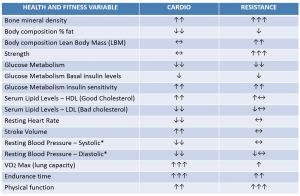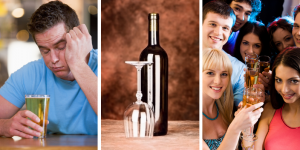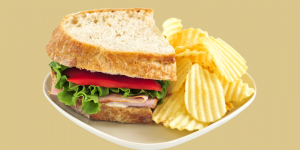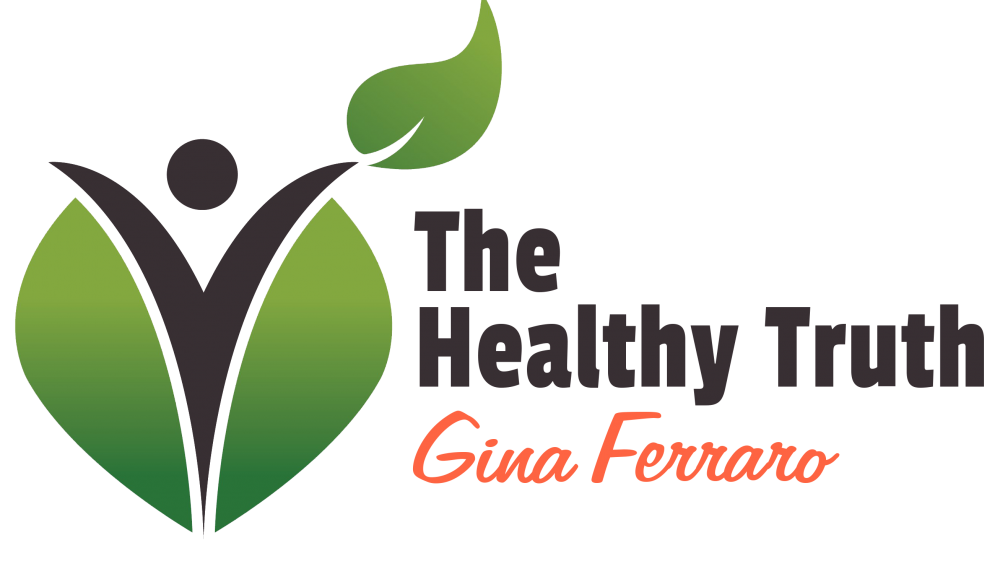by Gina Ferraro | May 13, 2014 | Exercise, Health, Injury prevention, Weight loss, Wellness

There are a few myths and misconceptions about sweating when exercising:
Myth #1. “If I sweat loads I will lose weight.”
Fact: Well yes I guess this is in PART true. But the weight you lose is water weight NOT fat weight, and will be replaced when you replace the necessary fluids during hydration!
Myth #2: “If I sweat excessively then that means I am unfit.”
Fact: Sweating is a way to thermoregulate (i.e. regulate your body temperature) and some people are more efficient at dissipating body heat than others, and this is NOT indicative of fitness levels.
When you exercise your body creates heat (when muscles contract the fibres slide over one another creating friction) and you have four methods to release this heat. Radiation, Convection, Conduction, and Evaporation. Now sweating comes under evaporation, but if it is actually dripping off you then it isn’t evaporating and therefore not really assisting you in cooling down. To help this along you will benefit from adding some convection (movement of air) via a fan as when airflow is added to a wet body it cools much faster than when it is added to a dry body.
Myth #3. “If you aren’t sweating whilst you exercise then you aren’t working hard enough”.
Fact: This is also incorrect. The explanation is the same as myth 2.
Your body loses as much as 1.5 litres of water a day and as much as that per hour during strenuous exercise in a hot environment.
As a general guideline, aim to drink around 8 cups or 2 litres/day (more if you exercise) and keep hydrated. However, this is just a guideline and each individual has different hydration requirements that will determine their specific intake.
Note: Fluid intake can also occur when consuming foods that contain water such as fruit and vegetables and this contributes to your required daily intake.
by Gina Ferraro | Apr 28, 2014 | Exercise, Health, Weight loss, Wellness

Cardio VS weights. Which is better? Well it greatly depends on what it is that you are trying to achieve, what your capabilities are, and what you like to do.
People are forever asking me what is the BEST method of training for weight loss….cardio or weights. Well the answer isn’t so simple. My first response would be “well neither. Weight loss happens in the kitchen”. But watching what you eat AND including physical activity in your life IS better than just watching your food intake alone when it comes to losing weight. So as far as the activity is concerned, BOTH can assist. The biggest deciding factor is the intensity with which you do it!
Remember though that intensity is inversely related to duration. I.e. if one goes up, the other goes down.
It would be difficult for most people to do a high intensity session every single day…..but some people COULD in fact do this quite safely. You could risk over-training and causing your body harm rather than doing it any good if you are inexperienced and unaccustomed. A combination of both are good for most people. My exercise prescription isn’t a “one size fits all” approach. I would consider a number of individual factors for each person before recommendations are given. But resistance training AND cardio both have their benefits for more health related areas than just weight loss. Refer to the table below.

by Gina Ferraro | Apr 27, 2014 | Exercise, Health, Weight loss, Wellness

I was training my legs at the gym on Monday night and as I rested between sets I was looking around to see a lot of people just going through the motions. It still amazes me how many people think they are going to get results by putting in a half-hearted effort. When I train, I am obsessed with the workout (and no that doesn’t mean I am obsessed with the gym because that couldn’t be further from the truth). But as the saying goes (and those who know me know I LOVE my inspirational sayings)…..”nothing will work unless YOU do!”
When I was a combat instructor there were times I would get so frustrated with the lack of effort from my class that I would go into a rant about how there isn’t magic pixie dust that falls on their heads when they walk through the gym entrance door that would magically give them their desired results! If you want your body to change then you need to create an internal environment which is conducive of change! How do we do that? Well you have to train BEYOND what you are currently capable of – otherwise your body is “coping” too well. If it isn’t coping – then it has to adapt. Adaptation = change! So the whole “what doesn’t challenge you doesn’t change you” statement is exactly what we need to focus on.
If your body is coping then it is efficient. The only active person who benefits from efficiency is an athlete because they want to get the maximum benefits possible for the least amount of effort for their best outcome. This enables them to have more in the tank for further performance.
Those who wish weight loss or muscle shape or growth don’t want to be efficient. They benefit more from using as MUCH energy as possible so that their body is forced into creating change.
It isn’t rocket science. The basics are quite simple. But too many people are stuck in old habits that produce no results and they continue to do it! God knows why! Doing the same thing over and over expecting a different result is the definition of stupidity!
Train smart and listen to those who have the proper scientific understanding guide you! Don’t be easily impressed with the trainers who rave about their own six pack who only did a four week online training course!
by Gina Ferraro | Apr 23, 2014 | Diet, Health, Nutrition, Weight loss, Wellness

The liver is our major detoxifying body organ. Whatever toxins we ingest, our poor liver has to deal with it (though other organs do too). Alcohol is a toxin. The liver breaks down alcohol at approx 1 standard drink p/hour.A standard drink is any drink containing 10 grams of alcohol:
* 100 ml wine
* A middy of beer (285ml)
* A schooner of light beer (425ml)
* One nip of alcohol (30ml of high strength 40% alcohol)
Yet many people drink WAY more than that.
Alcohol:
* Impairs digestion (leading to malnutrition of essential nutrients)
* Can cause insulin resistance
* Is a testicular toxin thereby increasing the activity of an enzyme that converts testosterone to oestrogen
* promotes fat storage around the abdomen
It increases the risk of:
* liver disease
* neurological damage
* cancer
* heart disease
* damage to the gastrointestinal tract
* injury
Its also very energy dense – yielding 7 calories per gram (though to be fair 2 of those calories are used up during digestion – this is the TEF) but these calories are preferred over all others so it will use it before it uses anything else (thereby making fat removal much harder)
A schooner of full strength beer (450ml) provides 714 kJ (170cals) ie. four beers equals 2856 kJ (680cals)
A Spirit and coke (one 30ml nip) provides 504kJ (120cals per glass)
1 bottle of wine (approx 4 large glasses) provides 2,352 kJ (560cals)
1 hour of walking burns around 1,050 kJ (250 cals). If you had 4 glasses of wine you would need to walk for over 2 hours just to burn it off (that’s just to get back to square one), then you need to complete your regular exercise to remove your stored fat.
I’ve heard so many people tell me they “burn off” their alcohol and this is just ridiculous thinking. Alcohol doesn’t just consist of calories – it is a poison! It’s all about health – not just about your clothing size! Don’t make silly choices and understand the risks you are taking.
That one was for you Scott.
by Gina Ferraro | Apr 20, 2014 | Diet, Exercise, Health, Nutrition, Weight loss, Wellness

It is predicted that the children of today will have a lifespan ten years LESS than their own parents! This is due to their sedentary lifestyle and toxifying their bodies with processed foods high in sugar, trans fats, and additives. And this is often occurring in foods that people “THINK” is healthy too, such as fruit juices and yoghurts…which are riddled with sugar. This is unacceptable! These “sometimes” foods have now become part of everyday eating….and it is the cause of the alarming growth of disease statistics. As a child I can’t remember a day that I wasn’t outside roller skating, riding my bike, playing hopscotch, elastics (wow….remember elastics? lol), doing handstands, heading down to the ice-rink etc etc. And this was on TOP of all the sport I played in school.
Today most kids are living sedentary “virtual” lives where they are hypnotised by video games of all sorts. Parents are so time poor that they often feed their children “quick & easy to prepare” food that is harming them. Cardiovascular disease risk factors are now being observed in children in primary school (and some even in infants school) and this is something that is easily preventable. Who would wish that sort of life for their child? Have a look at the kids in the pics on our Facebook Page (facebook.com/thehealthytruthsydney). That is NOT “puppy” fat. It is downright child abuse to lead a child down this path. Wake up people! We need to take control of what we feed our family and be responsible for the consequences of our negligence. I am not here to pull punches. I am here to tell you the cold hard facts. I’d rather you be annoyed with me now reading this than sorry later when you see the outcome affecting your children’s health and wellbeing. Oh and please don’t think that your child has “gotten away risk free” from all the bad food just because they exercise and don’t put on weight. These foods are damaging them on the inside and the result will eventually reveal itself when it is often too late.
by Gina Ferraro | Apr 15, 2014 | Diet, Health, Nutrition, Weight loss, Wellness

A calorie from one type of food is NOT equal to a calorie of another! That undermines everything there is to know about nutrition! A protein calorie is different to a carbohydrate calorie which is also different to a fat calorie. Specifically, the thermal effect of food (TEF) is different for each one. Protein uses the most amount of energy to digest (around 20-30% of its calories). Carbohydrates on the other hand, uses only 5-10% of its calories, with fats even lower at 0-3%. Furthermore, processed food calories are NOT the same as natural food calories. The body processes them VERY differently.
There may have been a time you ate more calories than you thought you should… but got leaner. Or you ate fewer calories than you thought you should… and gained weight. (Or you didn’t lose that last stubborn 5 kgs.). Or you started eating breakfast instead of skipping it… and dropped a couple of cms off your waistline. According to the simplistic “all calories are the same” view or the “food is fuel” view, none of this should be possible. Yet it happens all the time.
Everyone has a “set point” weight, and that is determined by genetics and hormones. It’s the QUALITY of the calories we eat, and the QUALITY of exercise we do that allows us to change our hormones. In order for us to do that, in order for us to lower our set point weight, we have to understand what determines the quality of a calorie; so we can eat the highest quality calories possible.
I was listening to a podcast last night that explained this perfectly:
“Four main areas that determine quality calories:
1. Satiety – how quickly calories fill us up and how long they keep us full.
2. Aggression. – how likely calories are to be stored as fat.
3. Nutrients – things like protein, vitamins, minerals, essential fatty acids
4. Efficiency – how many of the calories we eat can be stored as body fat.
The more satisfying, unaggressive, nutritious, and inefficient a calorie is, the higher its quality. These calories trigger body fat burning hormones when we eat them. They also clear our metabolic clog and prevent us from overeating. They’re a bit like metabolic Drano”.
Suggested reading: https://www.precisionnutrition.com/digesting-whole-vs-processed-foods







